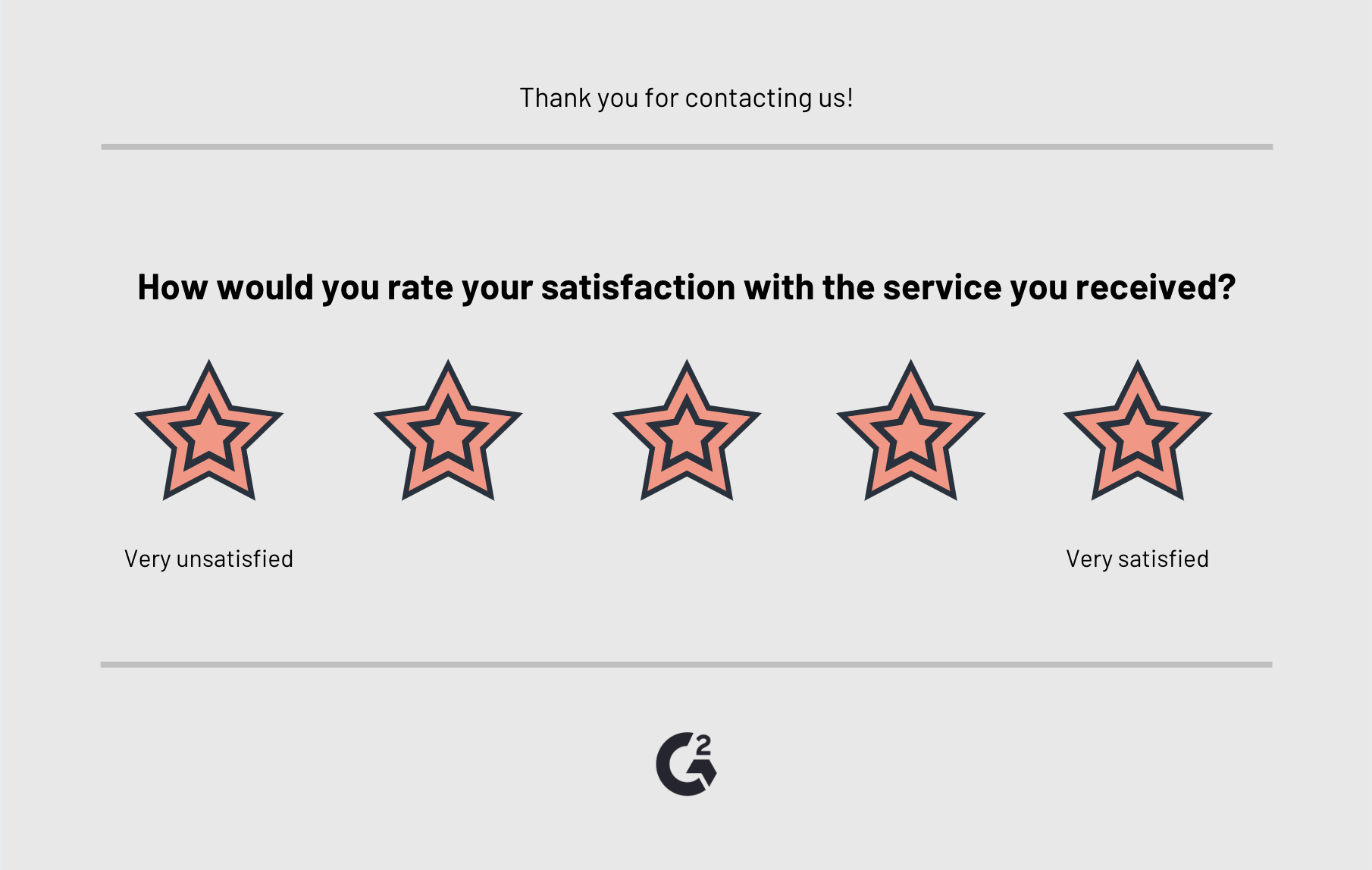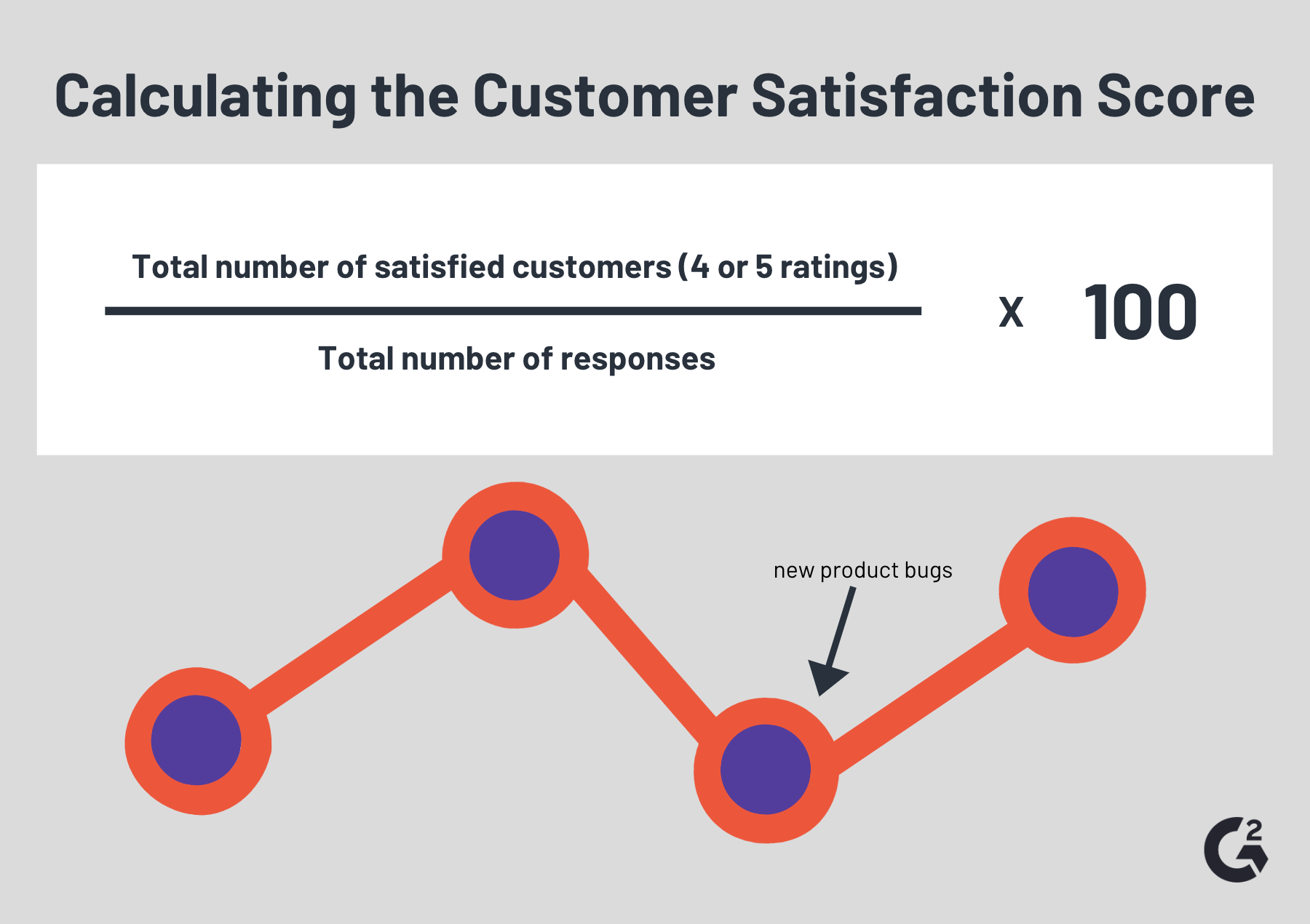When was the last time someone asked you how you felt about something?
Maybe it was last week when a friend asked you what you thought about a new restaurant. Or last night when a roommate asked you to give your day a 1 out of 10 rating.
Or maybe it was when you bought that totally necessary neon sign that says “Let’s party” on Amazon last night. After you clicked complete purchase, an automated question appeared asking you to rate your experience.
Enter the CSAT score.
What is a CSAT score?
A CSAT score is a survey methodology that measures customer satisfaction by asking them a direct question during a purchase or interaction. It’s measured by asking a question such as “How would you rate your experience?”
A CSAT score is the simplest way to gauge customer satisfaction when they interact with your brand. In this article, we’ll discuss its purpose, when to use it, and how it’s calculated.
The CSAT score: explained
All customer service jobs are centered around one thing: the customer experience.
If you’re not listening to your customers, you’re missing out on crucial information straight from the people who keep your business going. After all, how will you know how they feel about your product or service if you don’t ask them? Let’s talk about how the CSAT works.
Related: Discover the differences between 14 different customer service jobs and the qualifications you need to land one.
How the CSAT works
Most CSAT questions boil down to the question “How would you rate your satisfaction with the product/service you received?”
Possible answer choices are listed on a scale, normally ranging from 1-5, 1 representing a very poor customer impression, and 5 representing a very satisfied customer impression. A survey might look something like this:

Once you’ve collected a sizable amount of survey results, you’ve got the ingredients to make your final CSAT score.
Want to learn more about Embedded Business Intelligence Software? Explore Embedded Business Intelligence products.
Calculating CSAT
The CSAT score is classified as a key performance indicator that can help businesses assess how they’re performing.
Your CSAT score will range from 0-100. To calculate correctly, you’ll take the number of satisfied customers (the ones who rated you 4 or 5 on the scale), and divide that number by the total number of responses received.
For example, let’s say 54 of your 100 responses were rated 4 or 5. Your CSAT would be 54.

Monitoring your CSAT
Once you’ve calculated your CSAT scores over a series of months, you can begin to monitor it like you would any other metric. Dips in performance are a signal that processes may need to be readjusted and improved upon.
Plugging the data into business intelligence software can help your team to visualize your business’ overall customer satisfaction. Take a look at the top tools you can use to monitor your score and give one a try.
When to use the CSAT score
There are a variety of situations where using the CSAT score is beneficial to your company. If you’re looking for insights into your customer’s mind, further than what’s being said on social media, calculating your CSAT score is recommended.
Situations may include:
Sales interactions
Website and online checkout processes
Overall customer experience
Customer introduction or onboarding
Customer support interactions
Event feedback
Product launch feedback
Product or service follow up satisfaction
CSAT pros and cons
As measuring any given metric goes, the CSAT has its fair share of pros and cons.
Advantages of using CSAT
| Short and simple instructions |
| High response rates because of its simplicity |
| Ability to customize surveys to fit your company (using a numeric, star, or emoji rating system) |
| Customer success teams can measure customer satisfaction when onboarding |
| Sales can utilize post-purchase feedback to readjust their strategies for more wins in the future |
| HR can send out employee surveys to keep track of internal satisfaction |
| Marketing teams can implement competitive loss surveys to inform campaigns |
| Product teams can run surveys and collect feedback on new or existing products |
Disadvantages of using CSAT
| CSAT doesn’t allow for much detail when it comes to more intricate questions |
| Hard to quantify if the customer is satisfied enough to stick around and buy again |
| Ambiguity when it comes to what “satisfied” means |
| Customers usually don’t fill out surveys unless they’re very satisfied or very unsatisfied which could lead to skewed results |
| Can be considered a short-term metric and may only reflect how a customer feels in one singular instant |
Related: Discover the difference between the CSAT and the net promoter score.
Dig deeper
One thing to remember when using the CSAT is that there are ways you can ask questions that will provide you with more insight than just “How do you feel about our product?” Think of creative and constructive ways to measure your customer’s impression of you.
Consider asking “Would you recommend our product to a friend?” or “Does our product help you achieve your goals?” There are endless ways to pull insight from your customers, so get creative with your survey questions.
Speaking of surveys! If you’re thinking of fishing for information in your customer pool, check out the top survey software and get going.
Want to learn more? Take a look at the practices that will ruin customer satisfaction or learn how automated customer service can benefit your business.

Alexa Drake
Alexa is a former content associate at G2. Born and raised in Chicago, she went to Columbia College Chicago and entered the world of all things event marketing and social media. In her free time, she likes being outside with her dog, creating playlists, and dabbling in Illustrator. (she/her/hers)
